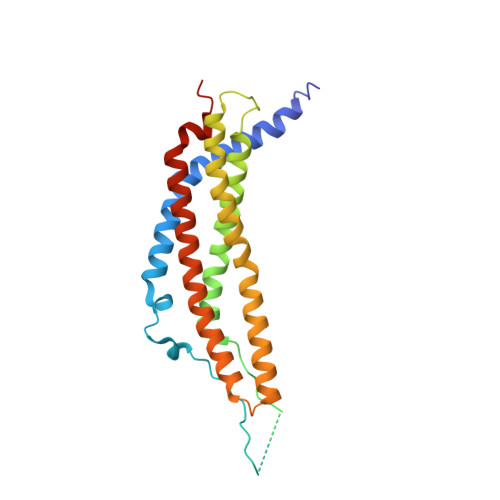The Mammalian Proteasome Activator PA28 Forms an Asymmetric alpha 4 beta 3 Complex.
Huber, E.M., Groll, M.(2017) Structure 25: 1473-1480.e3
- PubMed: 28867616
- DOI: https://doi.org/10.1016/j.str.2017.07.013
- Primary Citation of Related Structures:
5MSJ, 5MSK, 5MX5 - PubMed Abstract:
The heptameric proteasome activator (PA) 28αβ is known to modulate class I antigen processing by docking onto 20S proteasome core particles (CPs). The exact stoichiometry and arrangement of its α and β subunits, however, is still controversial. Here we analyzed murine PA28 complexes regarding structure and assembly. Strikingly, PA28α, PA28β, and PA28αβ preparations form heptamers, but solely PA28α and PA28αβ associate with CPs. Co-expression of α and β yields one unique PA28αβ species with an unchangeable subunit composition. Structural data on PA28α, PA28β, and PA28αβ up to 2.9 Å resolution reveal a PA28α 4 β 3 complex with an alternating subunit arrangement and a single α-α interface. Differential scanning fluorimetry experiments and activity assays classify PA28α 4 β 3 as most stable and most active, indicating that this assembly might represent the physiologically relevant species. Together, our data resolve subunit composition and arrangement of PA28αβ and clarify how an asymmetric heptamer can be assembled from two highly homologous subunits.
Organizational Affiliation:
Center for Integrated Protein Science, Department Chemie, Lehrstuhl für Biochemie, Technische Universität München, Lichtenbergstrasse 4, 85748 Garching, Germany. Electronic address: eva.huber@tum.de.














